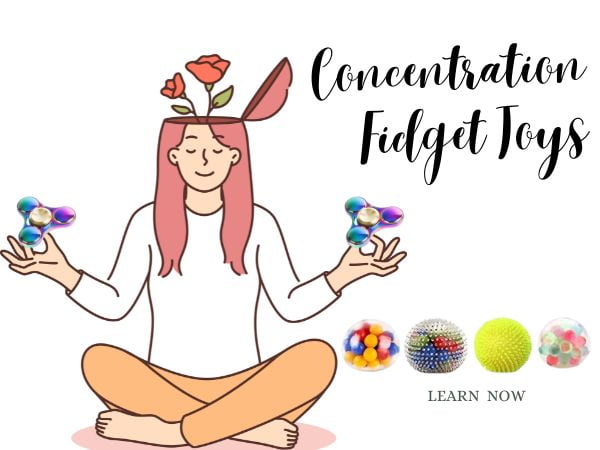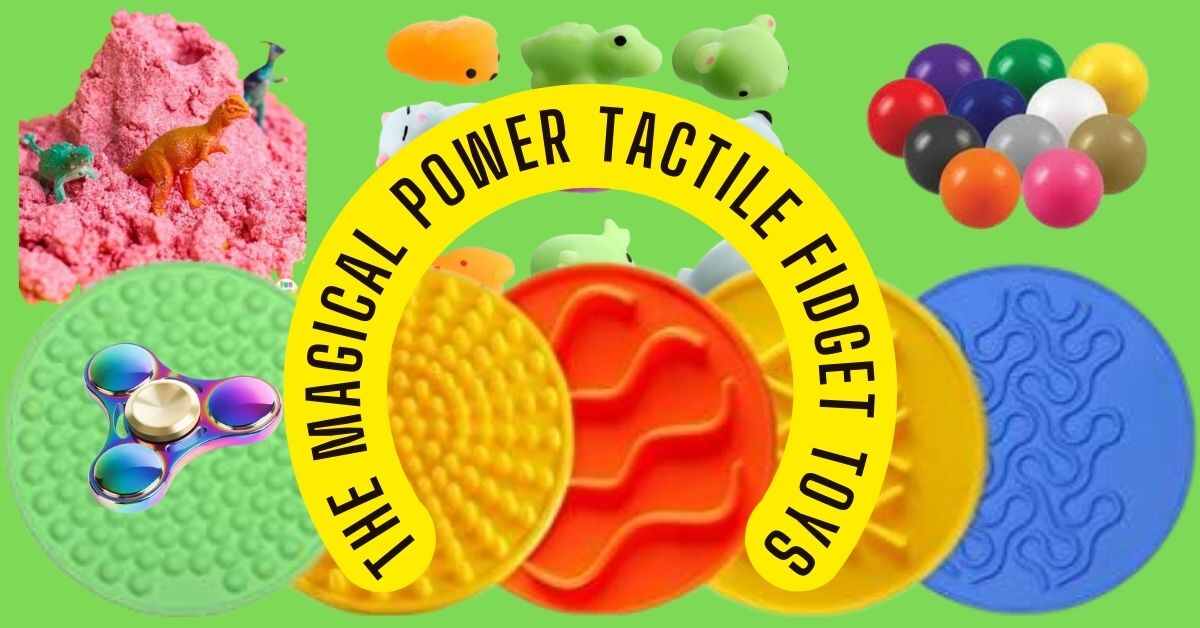Introduction
Skin picking disorder, also known as excoriation disorder, is a challenging condition that affects many individuals. It involves the compulsive urge to pick at one’s skin, leading to physical and emotional distress. In recent years, there has been growing interest in the use of fidget toys as a potential coping mechanism for this disorder. But do fidget toys truly help with skin picking?
Table of Contents
Understanding Skin Picking Disorder

What is Skin Picking Disorder?
Skin Picking Disorder is a mental health condition characterized by the repeated urge to pick at one’s skin, often resulting in tissue damage and significant distress.
Causes of Skin Picking Disorder
The causes of skin-picking disorder are multifaceted and can include genetic predispositions, environmental factors, and psychological triggers.
Impact on Mental Health
Beyond the physical effects, skin-picking disorder can lead to anxiety, depression, and diminished self-esteem, making effective coping strategies crucial.
Fidget Toys: An Overview
What are Fidget Toys?

Fidget toys are objects designed to provide sensory stimulation and a physical outlet for restless energy. They come in various forms, from stress balls to fidget spinners.
How Do Fidget Toys Work?
Fidget toys work by engaging the senses, offering a tactile experience that can redirect focus and alleviate nervous energy.
The Connection Between Fidget Toys and Skin Picking
Distraction and Focus
One of the key benefits of fidget toys is their ability to redirect focus away from the urge to pick, offering a healthier outlet for restless energy.
Stress Relief and Anxiety Reduction
Engaging with a fidget toy can promote relaxation, helping to reduce the anxiety that often accompanies skin-picking urges.
Sensory Stimulation
The tactile experience provided by fidget toys can offer a sensory alternative to skin picking, satisfying the need for physical sensation.
Is Skin Picking ADHD or Autism?
Skin picking, also known as dermatillomania or excoriation disorder, is not specific to ADHD or autism. It is a separate condition that can occur in individuals with or without these conditions.
However, there may be a higher prevalence of skin picking in individuals with ADHD, autism, or other mental health conditions. It is important to consult with a healthcare professional for a proper diagnosis and appropriate treatment options.
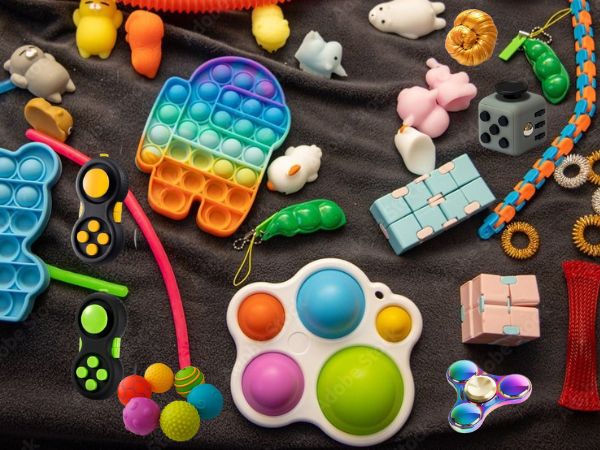
What Causes Dermatillomania?
The exact cause of dermatillomania is unknown, but it is believed to be linked to genetics since it tends to run in families. A 2012 study found that of 60 people with skin picking disorder, 28.3% of their close family members also had the disorder.
Other factors that may contribute to the development of dermatillomania include having another mental health problem like OCD or depression, stressful events in your life, such as moving or going away to college for the first time, being a perfectionist, and trying to hide your skin picking from others. Changes in brain structure may also play a role.
How is Dermatillomania Diagnosed?
Dermatillomania is diagnosed through a combination of a physical examination and discussions about your picking habits with a healthcare provider, such as a family doctor, dermatologist, or psychiatrist.
During the physical exam, the healthcare provider will look for signs of dermatillomania on your skin. They will also ask you questions about your medical history, life circumstances, and any behaviors related to this condition.
The diagnosis of dermatillomania cannot be made using blood tests or scans. Additionally, there are some questionnaires available to help diagnose dermatillomania, such as the Skin Picking Impact Scale (SPIS), which is a tool used by clinicians to measure the severity of skin picking.
A person with dermatillomania should receive treatment from both a therapist and a doctor to ensure they are taking care of their skin properly.
How can I Stop Skin Picking Habit?
If you’re struggling with skin picking or any related concerns, it’s always best to consult with a healthcare professional. However, here are some general tips that may help you break the habit:
- Know Your Triggers: Understanding what triggers your skin picking can be a crucial first step in finding effective treatments. Triggers can vary from boredom, itch, and negative emotions, to blemishes or simply looking at or feeling your skin. Identifying your triggers can help you decide which treatments to pursue.
- Make it Harder to Pick: Stimulus control is a simple strategy that involves changing your environment to make it more difficult to pick. For example, you can keep your nails short, wear gloves at times when you are most likely to pick, or make the skin more difficult to access by wearing tight-fitting clothing or long-sleeve shirts. Distracting your hands with items like silly putty, stress balls, fidgets, and tangle toys can also be helpful.
- Get Therapy: Cognitive-behavioral therapy (CBT) is an organized form of psychotherapy that seeks to create healthier beliefs and behaviors by recognizing problematic ideas and behaviors.. CBT can be an effective treatment for the skin-picking disorder. Consulting with a mental health professional with expertise in skin picking can help you explore therapy options.
- Find a Competing Response: When you catch yourself wanting to pick your skin, distraction is key. For example, clenching your fist for 60 seconds can be a great way to replace touching your face until the urge subsides.
- Practice Purposeful Relaxing: Taking a few deep meditative breaths can help ward off the urge to pick.
Do Fidget Toys Help With Skin Picking?
If you’re looking to reduce the impulse to pick your skin, several fidget toys can help you reduce or stop the habit for good. The best fidget toys for skin picking will be based on your triggers and sensory preferences. Here are some options to consider:
A Small Fidget Cube With 6 Sensory Activities: This pocket-sized cube is packed with six sensory activities, including clicking, gliding, flipping, rolling, and spinning. It also has an oval-shaped indent that can be used as a worry stone for your thumb.
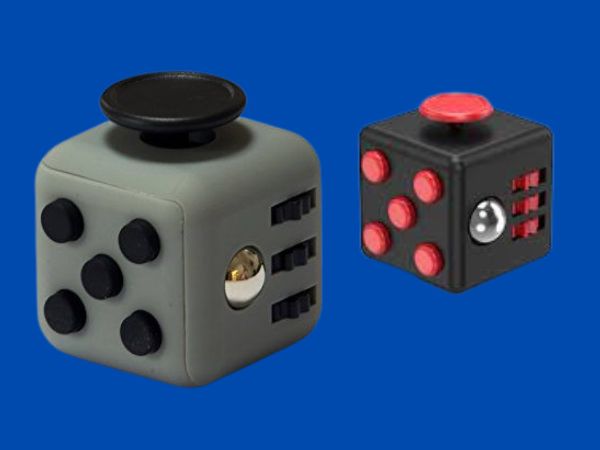
Spinner Ring: A spinner ring can be helpful in public settings if you don’t want to draw attention to carrying around a toy. It provides a discreet way to keep your hands occupied.
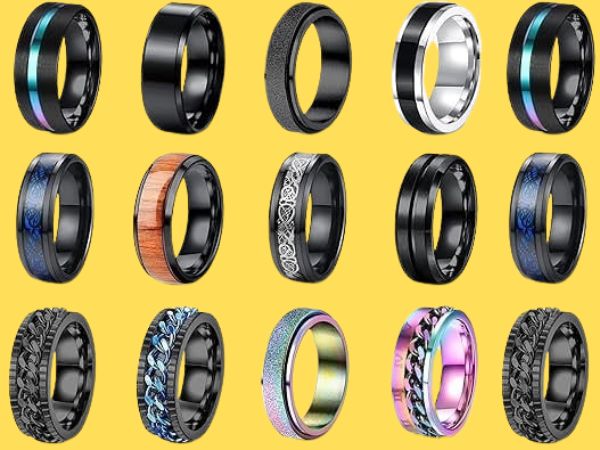
Stress Balls: Squeezing stress balls can help redirect your focus and provide a sensory outlet for your hands.

Slime or Putty: Playing with slime or putty can be a tactile and soothing experience. It can help keep your hands busy and provide a satisfying sensory experience.

Edamame Key Chain: An edamame key chain is a small, portable toy that can be squeezed and popped. It offers a satisfying tactile experience and can be easily carried around.
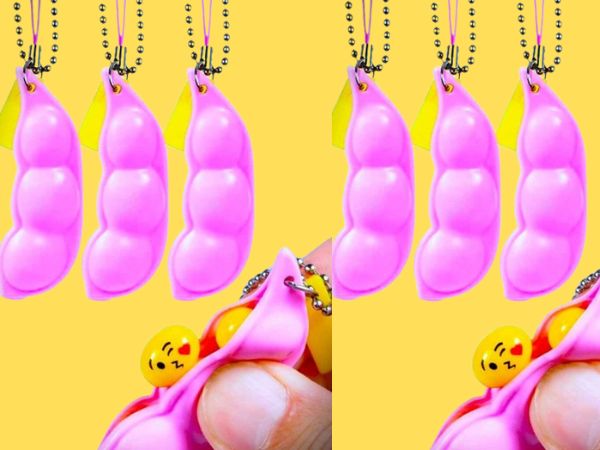
Top Fidget Toys for Skin Picking
Here’s a tabular representation of Top Fidget Toys for Skin Picking:
| Fidget Toy | Description | Benefits for Skin Picking |
|---|---|---|
| 1. Fidget Spinners | Small hand-held devices with spinning discs or wheels that can be rotated. | Helps redirect the urge to pick by providing a tactile distraction. |
| 2. Stress Balls | Squeezable balls made of foam or rubber. | Benefits of Skin Picking |
| 3. Tangle Toys | Interconnected plastic pieces that can be twisted and turned. | Provides a sensory experience that diverts attention from skin picking. |
| 4. Pop Bubble Sensory Toys | Silicone toys with bubble-like shapes that can be popped. | Mimics the sensation of skin picking in a harmless way, satisfying the urge. |
| 5. Fidget Cube | A small cube with various features like buttons, switches, and rollers. | Offers a stress-relief outlet, reducing the need to pick at the skin. |
| 6. Spinning Rings | Rings with rotating components that can be spun with the fingers. | Engages different sensory channels, helping to curb skin-picking tendencies. |
| 7. Chewable Jewelry | Necklaces or bracelets designed for chewing. | Diverts oral fixation and provides sensory stimulation, reducing skin picking. |
| 8. Squishy Toys | Soft, squeezable toys that can be kneaded and squished. | Offers a tactile and stress-relief outlet, reducing the need to pick at the skin. |
| 9. Kinetic Sand | Moldable sand that can be shaped and squeezed. | Provides a soothing sensory experience that distracts from skin picking. |
| 10. Puzzle Toys | Brain-teasing puzzles like Rubik’s cubes or jigsaw puzzles. | Engages the mind and hands, redirecting attention away from skin picking. |
How Can We Choose the Right Fidget Toys for Skin Picking?
Choosing the right fidget toy for skin picking can be a personal process, as it depends on your triggers and sensory preferences. However, here are some general tips to keep in mind:
- Consider Your Triggers: Understanding what triggers your skin picking can be a crucial first step in finding effective treatments. Triggers can vary from boredom, itch, and negative emotions, to blemishes or simply looking at or feeling your skin. Identifying your triggers can help you decide which treatments to pursue.
- Think About Your Sensory Preferences: Some people prefer fidget toys that are soft and squishy, while others prefer toys that are hard and textured. Consider what textures and sensations you find most satisfying and look for toys that meet those preferences.
- Try Different Toys: It’s important to find a fidget toy that meets your specific needs and preferences. You may benefit from switching between different toys to satisfy your sensory preferences.
- Consider Discreetness: If you’re looking for a fidget toy that you can use in public settings, consider toys that are small and discreet, such as spinner rings or edamame keychains.
Where Can We Find Fidget Toys for Skin Picking?
Fidget toys for skin picking can be found in various places. Here are a few options:
Online retailers: Websites like Amazon, eBay, and Etsy offer a wide range of fidget toys specifically designed for stress relief and sensory stimulation. You can browse through their collections and choose the ones that suit your preferences.
Specialty stores: Some stores specialize in toys, games, and sensory products. These stores may have a dedicated section for fidget toys or stress relief items. Check your local area for any specialty stores that carry fidget toys.
Toy stores: Many toy stores carry fidget toys as well. Look for toy stores in your area and visit their stores or check their websites to see if they have a selection of fidget toys available.
Office supply stores: Some office supply stores also stock fidget toys as stress-relieving tools for adults. Check their office gadgets or stress relief sections to see if they have any fidget toys in stock.
Local specialty shops: Explore local specialty shops that focus on mindfulness, wellness, or self-care. These shops may carry fidget toys or stress relief items that can help with skin-picking habits.
Craft fairs or markets: Local craft fairs or markets often feature handmade fidget toys or stress relief products. Attending these events can provide an opportunity to find unique and locally made fidget toys.
Introducing Fidget Toys into Your Routine
Incorporating Fidget Toys into Daily Activities
Whether at work, school, or during leisure time, integrating fidget toys into your routine can provide consistent support in managing skin-picking urges.
Finding the Balance
While fidget toys can be immensely helpful, it’s important to strike a balance and not become overly reliant on them as the sole coping mechanism.
Other Complementary Strategies
Mindfulness and Meditation
Practices like mindfulness and meditation can enhance your overall coping toolkit, promoting self-awareness and emotional regulation.
Professional Help and Support Groups
In addition to fidget toys, seeking professional support and connecting with others who share similar experiences can be invaluable in your journey toward recovery.
Potential Drawbacks and Considerations
Over-reliance on Fidget Toys
While fidget toys can be a valuable tool, it’s important to remember that they are just one component of a comprehensive coping strategy.
Individual Differences in Response
Not everyone will respond to fidget toys in the same way. Some individuals may find them immensely helpful, while others may not experience the same level of benefit.
Conclusion
Incorporating fidget toys into your toolkit for managing skin-picking disorder can be a transformative step toward better mental health. By providing a constructive outlet for restless energy and redirecting focus, these toys offer a powerful complement to other coping strategies.
Please note that the information provided here is not a substitute for professional medical advice. If you’re struggling with skin picking or any related concerns, it’s always best to consult with a healthcare professional.
Frequently Asked Questions (FAQs)
1. Can fidget toys completely replace professional treatment for skin picking disorder?
No, fidget toys can complement professional treatment for skin picking disorder, but they are not a complete replacement for professional intervention.
2. Are there any age restrictions for using fidget toys?
No strict age restrictions, but fidget toys should be age-appropriate to ensure safety and effectiveness in managing skin picking disorder.
3. How long does it take to see results from using fidget toys for skin picking?
Results from using fidget toys for skin picking vary. Some may experience benefits immediately, while others may see improvement over weeks or months of consistent use.
4. Can fidget toys be used for other compulsive behaviors?
Yes, fidget toys can be effective for managing various compulsive behaviors beyond skin picking, providing a healthy outlet for nervous energy, and promoting focus and calmness.
5. Are there any risks associated with using fidget toys excessively?
Excessive use of fidget toys can potentially lead to minor discomfort or distraction. However, when used responsibly, they are generally considered safe and beneficial for managing compulsive behaviors like skin picking.



